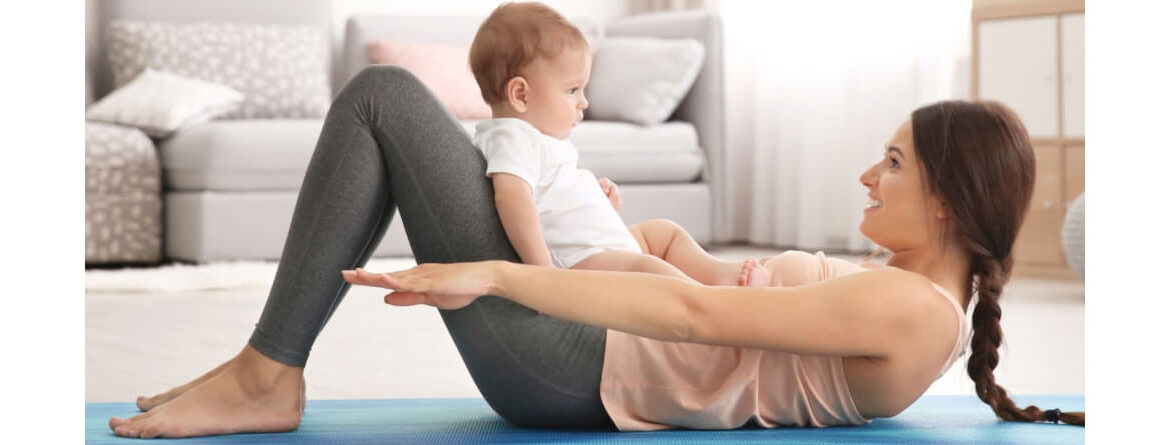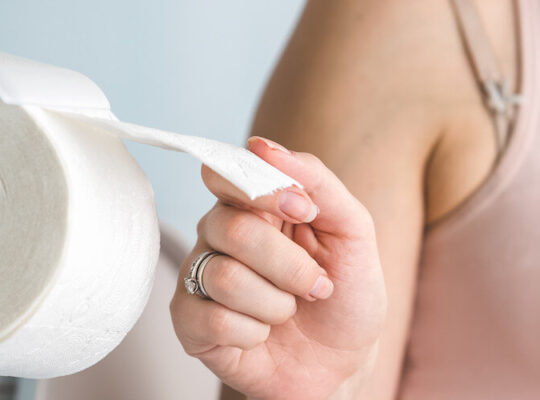3 Safe Physical Therapy Exercises for New Moms
You’re cleared by your doctor at your 6 week check up and excited to get back to exercise. Now you’re faced with 2 questions: When do I have time to exercise? Where should I start? In between feeding and caring for your newborn and balancing family responsibilities, it almost seems impossible to find time for yourself.
It’s easier than you think. In fact, these 3 physical therapy exercises are pretty much essential after having a baby. So while your baby is enjoying time in the bouncer or sleeping, find a comfortable place to sit. Sit directly on top of your sitting bones with shoulders stacked over your hips. Start slowly if you’re still experiencing some discomfort from a cesarean or perineal scar.
Breathing. Yes, it’s that simple! By your 3rd trimester in pregnancy, your diaphragm gets pressed upward and lung volume decreases. Postpartum, you want to work on restoring your breathing pattern, as your diaphragm and pelvic floor work together as a unit.
- Place your hands on either side of your ribcage and take a couple of deep breaths. Make sure that you feel movement (hands drawing apart, then coming together)
- Place one hand on your chest and another hand on the belly. Try 3 part breathing – first allowing your chest to lift, ribcage expand, and the belly rise. Then slowly exhale and reverse the movement. Repeat this a few times. When you inhale, you should feel your pelvic floor muscles relax and when you exhale, feel the pelvic floor gently lift.
Pelvic Floor Contractions. This should be pain-free. In my experience as a physical therapist, even new moms who had difficult deliveries (instrument assisted or 3rd, 4th degree tearing) were able to tolerate doing very soon postpartum. It’s OK to feel a mild “pulling” sensation when contracting the pelvic floor muscles.
- Think about gently squeezing the vaginal opening and anus, then drawing “up and in.”
- Hold for a 5 second count, then slowly relax the pelvic floor muscles
- It is helpful to visualize an elevator that is traveling upward from the perineum
- Make sure that your legs and gluts are relaxed throughout the exercise
- Repeat this 5 times and practice a few times throughout the day. Rest in between the repetitions. Can be done while breastfeeding or pumping!
Finding the “Deep” Abdominal Muscles. The transversus abdominis muscle is the deepest layer of your abdominal muscles. It makes up one part of your entire “core.”
- Place your hands on your pelvis, with the index and middle fingers resting inside of the bony flares of the hips. Take a deep breath in and exhale slowly and fully, like you’re blowing out of a straw. At end of the exhalation, you will feel some tension under your fingertips. Try to hold this contraction for a few breaths, then relax. Repeat 5 times to start.
- You can also try engaging the pelvic floor muscles and see if that helps trigger the transversus muscle.
- It’s ok if you don’t feel this right away! Most likely, it could take several sessions to feel the muscle “turn on.”
Again, make sure that you have minimal pain or discomfort while doing the exercises. You can check in with a pelvic floor or women’s health physical therapist who will make sure that you’re doing them correctly.






